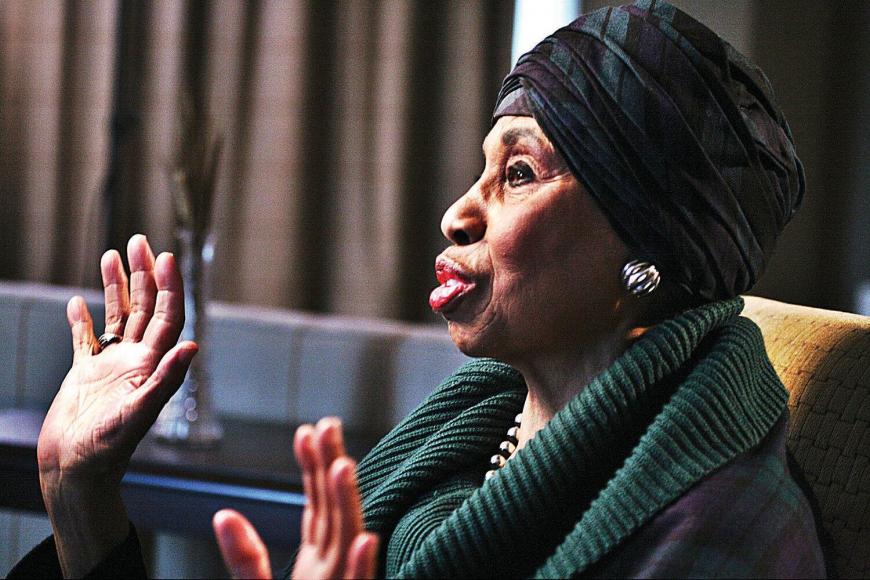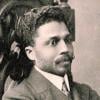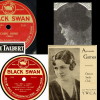
What isn’t essential about soprano Leontyne Price (born Feb. 7, 1927)? As the end of Black History Month approaches, with Price just having celebrated her 95th birthday, her central position as the first African American soprano to achieve international recognition remains indelible in the consciousness of all classical music lovers, freedom lovers, and students of American history.
Price was the epitome of one aspect of the American Dream: She transcended racial barriers to achievement with the assistance of people both Black and white. Raised in a musical family in highly segregated Laurel, Mississippi, Mary Violet Leontyne Price found early inspiration in a recital by Black contralto Marian Anderson that she heard when she was 9. Encouraged to pursue a singing career by bass Paul Robeson (who in 1948 helped raise money for her tuition at Juilliard), she was ultimately able to attend the school thanks to the financial support of the Chisholms, a white family for whom her aunt worked as a maid.

Perhaps the earliest recording of Price while she was still honing her skills at Juilliard was captured on Nov. 7, 1951, when she sang songs of Stravinsky and Ravel:
Early Recordings: Porgy and Bess (audite, from 1952 masters), Leontyne Price and Samuel Barber in Concert (Bridge, from 1953 masters)
In 1952, Price’s performance as Mistress Ford in a Juilliard performance of Verdi’s Falstaff attracted the attention of composer Virgil Thomson, who cast her in a revival of his all-Black opera with Gertrude Stein, Four Saints in Three Acts. After performances at home and abroad in Porgy and Bess — you can hear a recording of her Bess in the September 1952 Berlin production that also starred her husband, William Warfield (Porgy), and Cab Calloway (Sportin’ Life) — her career was boosted by another gay composer, Samuel Barber, who invited her to debut his Hermit Songs as part of the recital he accompanied at the Library of Congress on Oct. 30, 1953. Less well known is that, at Barber’s suggestion, gay composer Lou Harrison engaged her to sing his music in competition for the coveted Rome Prize.
In January 1955, NBC Opera Theatre cast Price as Tosca in a live English-language performance of Puccini’s opera.
Price’s first performance in one of her signature roles, Aida — a love-torn character whose identity as a Black princess forced into slavery continued to speak to Price and bring out the best she had to offer throughout her career — came in a concert performance with the Philadelphia Orchestra on May 3, 1957. Almost 28 years later, she ended her operatic career with an unforgettable televised Metropolitan Opera performance of Aida, in which, during the final farewell to life, tenor James McCracken held her hand tightly as her voice remained steady through tears.
In Her Prime: Leontyne Price – A Program of Song (RCA, 1959), Price reDiscovered (RCA, 1965), Beethoven’s Ninth Symphony (RCA, 1958), Christmas With Leontyne Price (London, 1961)
Price’s U.S. operatic debut arrived on Sept. 20, 1957, when she performed as Madame Lidoine in San Francisco Opera’s U.S. premiere of Francis Poulenc’s Dialogues of the Carmelites. Though I know of no recordings of that debut — her recording of “Mes filles, voilà que s’achève” (My daughters, we have almost come to the end) from the opera came 13 years later, in 1970 — she did sing Poulenc songs in an early Juilliard recital; recorded four in 1959 on A Program of Song with her careerlong pianist of choice, David Garvey; and sang four others in the indispensable live 1965 Carnegie recital debut with Garvey, captured during a period when she was pushing herself to her limits.
The 1959 recital and a performance the previous year of Beethoven’s Ninth Symphony with Charles Munch and the Boston Symphony mark the start of her first great period on record. The string of albums and live performances that were recorded and released between 1959 and 1970 — Discogs lists at least 26, including Christmas Offering, aka Christmas With Leontyne Price, which she recorded with one of her most important mentors, Herbert von Karajan, in 1961 — display her in her prime in all her great roles. They also showcase her at a time when she was paying the most attention to phrasing and doing her best to control tendencies to “yip” at the end of phrases, rush through lower passages until she could luxuriate on a glorious high note, and to generalize emotion. Hear how she worked to integrate her low, medium, and high ranges without exposing the breaks and disparities between them.
In truth, those of us who attended Price’s recitals often clapped dutifully, albeit with reverence, through both halves of the recital in the hope that she’d turn to arias for her encores. Sure enough, in a late-career recital I attended in the San Francisco War Memorial Opera House with David Garvey, she did exactly that.
In the Role: Leontyne Price (RCA, 1961), Verdi: Aida (Decca, 1962), Puccini: Madama Butterfly (RCA, 1962), Puccini: Tosca (Decca, 1963), Verdi: Il trovatore (RCA, 1970)
But let’s return to Price in her first prime. For those wishing to know what all the fuss was about, start with the famous “blue album,” Leontyne Price, that assembles arias from all her signature, encore-worthy roles in one place. Recorded 1959–1960 with the Rome Opera Orchestra conducted by Oliviero de Fabritiis and Arturo Basile, it presents her as Aida, Butterfly, Tosca, Leonora (Il trovatore), Magda (La rondine), and Liù (Turandot). Savor her bubbly, almost frothy vibrato on high and notes whose sheer sensuality, sheen, and beauty have never been equaled on record.
Then, turn to her complete recordings of these roles. All exist in multiple versions, save for Magda. Specifically, grab the Solti recording of Aida to hear high passages floated with supreme ease and glory. The Madama Butterfly with Leinsdorf is surprisingly affecting, and the Karajan-conducted Tosca, overshadowed by Callas’s performance with de Fabritiis, is glorious, nonetheless.
In addition to many live performances of Il trovatore — her Salzburg debut as Leonora with Karajan was recorded — Price performed Leonora’s two great arias on television during her prime and commercially recorded the opera three times. If you really want to understand her, listen to as many different recordings of the second aria, “D’amor sull’ali rosee” (On rosy wings of love), as you can find.
The best complete recording of Il trovatore by far is her 1969 foray with Zubin Mehta (released 1970) with a Met dream cast that also included Placido Domingo, Sherrill Milnes, and Fiorenza Cossotto. Price’s vibrato has gotten a little smoother on top, but Mehta manages to get Price to slow down and luxuriate. It’s a wonderful performance.
Other Essentials: Leontyne Price – Prima Donna (various)
I would never be without the Prima Donna collection. Some of the performances on the first two albums, both recorded with Francesco Molinari-Pradelli in Rome in 1965 or 1966, are to die for. To go from the amazing recording of Louise’s “Depuis le jour” — has anyone ever sung the high notes as gloriously and then uttered the final lines so sensually? — to her rip-roaring rendition of Vanessa’s “Do not utter a word” from the eponymously titled gothic tale by Barber and Gian Carlo Menotti, is to savor Leontyne Price at her best. Don’t miss her echt-prima donna way with the ending of “Io son l’umile ancella” (I am the humble servant of the creative spirit) from Francesco Cilea’s Adriana Lecouvreur — contrast it with role creator Magda Olivero’s many performances to discover how two entirely different sopranos chose different ways to showcase their considerable strengths. And who could forget the terribly inauthentic but nonetheless magnificently sung “Care selve” (Dear woods) from Handel’s Atalanta?
Finally, let us give thanks to this great artist. May her life continue to be filled with as many glorious highs as she gave us in a career that lasted well over three decades.







